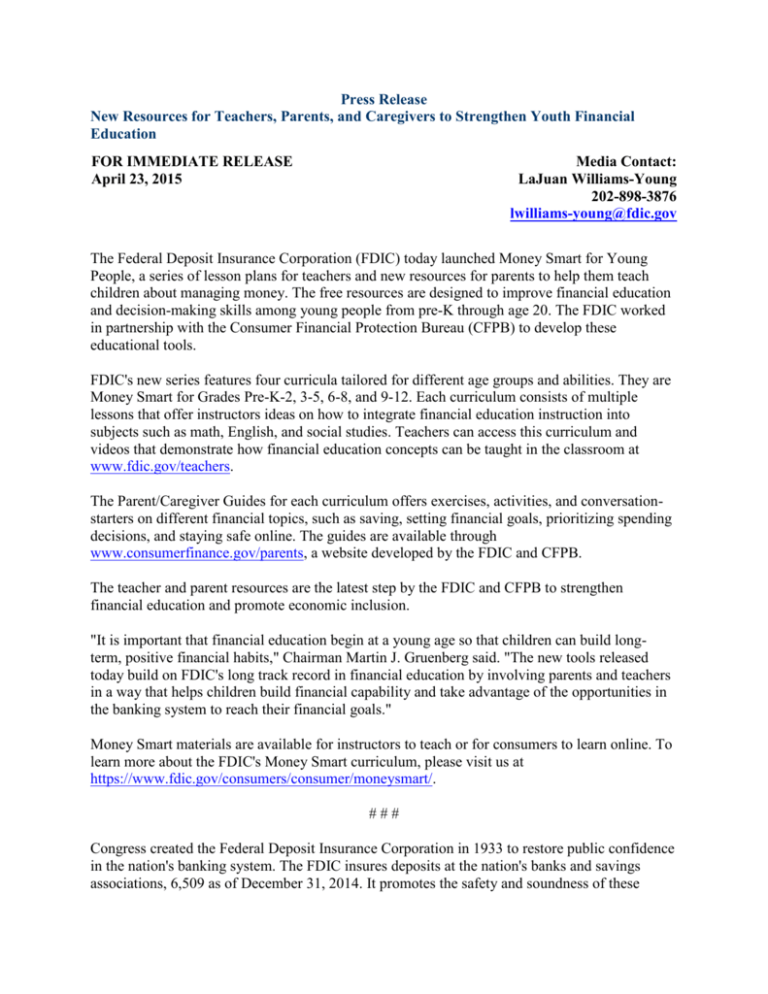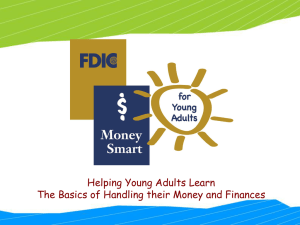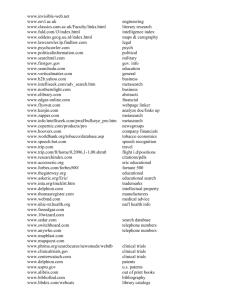FDIC Press Release April 2015
advertisement

Press Release New Resources for Teachers, Parents, and Caregivers to Strengthen Youth Financial Education FOR IMMEDIATE RELEASE April 23, 2015 Media Contact: LaJuan Williams-Young 202-898-3876 lwilliams-young@fdic.gov The Federal Deposit Insurance Corporation (FDIC) today launched Money Smart for Young People, a series of lesson plans for teachers and new resources for parents to help them teach children about managing money. The free resources are designed to improve financial education and decision-making skills among young people from pre-K through age 20. The FDIC worked in partnership with the Consumer Financial Protection Bureau (CFPB) to develop these educational tools. FDIC's new series features four curricula tailored for different age groups and abilities. They are Money Smart for Grades Pre-K-2, 3-5, 6-8, and 9-12. Each curriculum consists of multiple lessons that offer instructors ideas on how to integrate financial education instruction into subjects such as math, English, and social studies. Teachers can access this curriculum and videos that demonstrate how financial education concepts can be taught in the classroom at www.fdic.gov/teachers. The Parent/Caregiver Guides for each curriculum offers exercises, activities, and conversationstarters on different financial topics, such as saving, setting financial goals, prioritizing spending decisions, and staying safe online. The guides are available through www.consumerfinance.gov/parents, a website developed by the FDIC and CFPB. The teacher and parent resources are the latest step by the FDIC and CFPB to strengthen financial education and promote economic inclusion. "It is important that financial education begin at a young age so that children can build longterm, positive financial habits," Chairman Martin J. Gruenberg said. "The new tools released today build on FDIC's long track record in financial education by involving parents and teachers in a way that helps children build financial capability and take advantage of the opportunities in the banking system to reach their financial goals." Money Smart materials are available for instructors to teach or for consumers to learn online. To learn more about the FDIC's Money Smart curriculum, please visit us at https://www.fdic.gov/consumers/consumer/moneysmart/. ### Congress created the Federal Deposit Insurance Corporation in 1933 to restore public confidence in the nation's banking system. The FDIC insures deposits at the nation's banks and savings associations, 6,509 as of December 31, 2014. It promotes the safety and soundness of these institutions by identifying, monitoring and addressing risks to which they are exposed. The FDIC receives no federal tax dollars — insured financial institutions fund its operations. FDIC press releases and other information are available on the Internet at www.fdic.gov, by subscription electronically (go to www.fdic.gov/about/subscriptions/index.html) and may also be obtained through the FDIC's Public Information Center (877-275-3342 or 703-562-2200). PR35-2015 The FDIC does not send unsolicited e-mail. If this publication has reached you in error, or if you no longer wish to receive this service, please unsubscribe. Questions for FDIC? Contact Us











